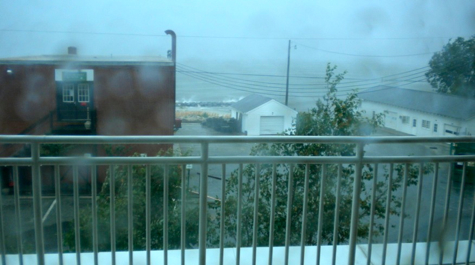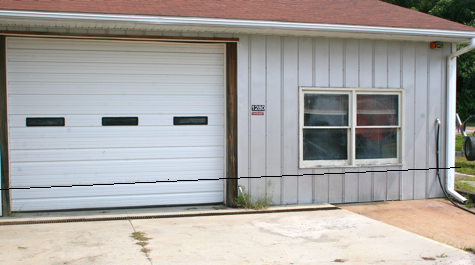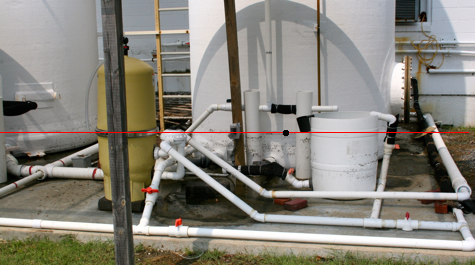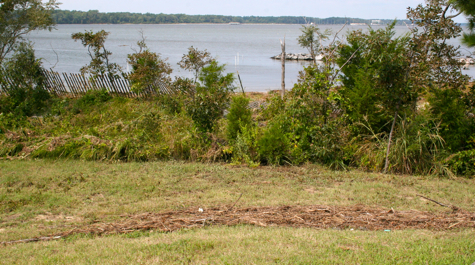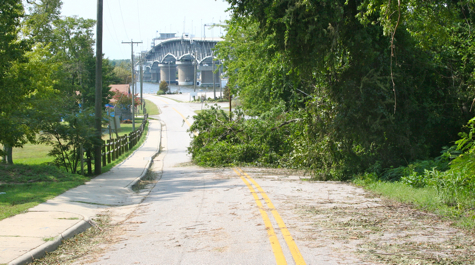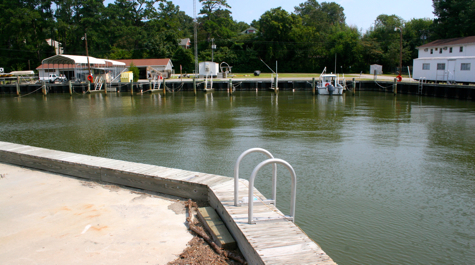VIMS escapes major damage from Irene
The Virginia Institute of Marine Science escaped any major damage from Hurricane Irene, with minor flooding of the VIMS Boat Basin the only significant effect of the storm.
VIMS Dean and Director John Wells says “We toured the Gloucester Point campus this morning and it looked to be in very good shape. There was no structural damage to any of our buildings. There was flooding in the boat basin but it was relatively minor.”
VIMS did lose power between midnight and 1 am on Sunday morning, but it was restored by 2:00 p.m. that day. Diesel generators provided back-up power to research facilities and the computer center in Watermen’s Hall. Wells says there was “no known loss of computer data.”
Wells reports that the VIMS Eastern Shore Laboratory in Wachapreague is also “in good shape.” P.G. Ross, Senior Marine Scientist at the Lab, says "we were very lucky, with minor flooding in several buildings, but no structural damage and no loss of capacity or data."
Preliminary data from the Tidewatch program at VIMS show that water levels at the U.S. Coast Guard Training Center in Yorktown—the closest tidal station to the VIMS campus in Gloucester Point—reached a maximum during Irene of 3.26 feet above highest astronomical tide. That compares to 3.62 feet during "Nor'Ida" in November 2009.
The weather station on the Coleman Bridge reported sustained winds of 49 mph during the height of Irene, with 54-mph gusts. The weather station at the Coast Guard Training Center reported sustained winds of 51 mph, with gusts of 64 mph and a minimum barometric pressure of 28.79 inches. The highest wind gust reported locally was 75.8 mph in Williamsburg. Local rainfall amounts were generally in the 8-10 inch range, with a maximum of 11.96 inches in Chesapeake.
Facility upgrades pay benefits
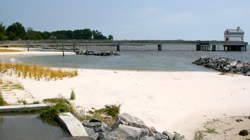 Although water levels at VIMS during Irene approached those
experienced during recent storms such as Isabel, Ernesto, and Nor’Ida, the
campus escaped the damage levels experienced during these earlier events.
Although water levels at VIMS during Irene approached those
experienced during recent storms such as Isabel, Ernesto, and Nor’Ida, the
campus escaped the damage levels experienced during these earlier events.
Wells attributes the lack of damage both to recent facility upgrades and hard work by VIMS staff. The upgrades include a new concrete pier—whose deck sits 13 feet above mean sea level, and the new Facilities Support Center in the VIMS Boat Basin, which is elevated 10 feet above mean sea level.
Also in the mix is the new VIMS shoreline. Completed in 2010, the shoreline was designed by Scott Hardaway of VIMS’ Shoreline Studies Program to use stone breakwaters, sand, and native plants to protect the VIMS shoreline and campus from storm tides and waves.
Richard White, Director of Facilities Management at VIMS, says that the Institute’s resilience to Irene was also due to hard work by Facilities and Field Operations staff, who “did a superb job of preparing the campus and taking care of clean up.” Preparation including moving nearly all of VIMS’ 40-vessel research fleet out of the Boat Basin to higher ground on the VIMS campus.
White notes that Security Supervisor Patsy Powell spent all of Saturday night at VIMS, and that P.G. Ross at the Eastern Shore Laboratory “did a very professional job of managing overall operations" in the absence of ESL Director Mark Luckenbach, who is currently teaching a field course in Wales.

